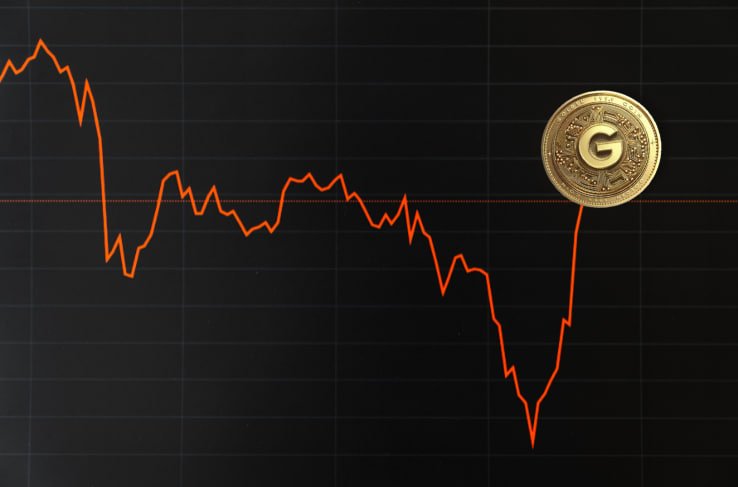
The Evolution of Digital Assets: From Bitcoin to Golden Coin
Digital assets have become an integral part of our lives, establishing themselves as a key component of the modern financial system. Their evolution is not just a story of technological advancements, but also a reflection of changes in the global economy and the perception of money as a whole. In this article, we will explore the journey that digital assets have taken, from the emergence of Bitcoin to the rise of new tokens like Golden Coin, and their integration into the global financial system.
1. The Birth of Bitcoin: The First Cryptocurrency
Bitcoin as the Beginning of a New Era
Bitcoin, created in 2008 by an unknown person or group under the pseudonym Satoshi Nakamoto, became the world’s first cryptocurrency. It offered the world an alternative to traditional currencies and banking systems, based on blockchain technology. Bitcoin laid the foundation for the entire cryptocurrency industry, proving the possibility of a decentralized digital currency.
The Evolution of Bitcoin
The early years of Bitcoin were filled with skepticism. Most people viewed it as an experiment or a temporary phenomenon. However, over time, as Bitcoin’s popularity grew, it began attracting the attention of major investors and tech companies. By 2013, Bitcoin had become a significant element of the financial system, and some online retailers started accepting it as a means of payment.
2. The Development of the Cryptocurrency Market: From Altcoins to DeFi
The Emergence of Altcoins
Following Bitcoin’s success, so-called altcoins—alternative cryptocurrencies—began to emerge, offering various improvements and innovations compared to Bitcoin. Litecoin, Ethereum, Ripple—these all became important players in the cryptocurrency market, providing users with new features such as smart contracts, faster transactions, and enhanced security algorithms.
The Rise of Decentralized Finance (DeFi)
The next stage in the evolution of digital assets is associated with the rise of decentralized finance (DeFi). DeFi represents an ecosystem of financial applications operating on blockchain and offering services traditionally provided by banks and other financial institutions, such as loans, deposits, currency exchange, and more. DeFi has enabled users to access financial services without intermediaries, significantly reducing costs and speeding up processes.
3. The Emergence of New Tokens: The Rise of Golden Coin
Why New Tokens Emerged
As the cryptocurrency market evolved, it became clear that new solutions were needed to meet the needs of various sectors of the economy. Thus, tokens were created, representing digital assets designed for specific purposes. One such token is Golden Coin, which is aimed at creating a bridge between digital and traditional assets.
Golden Coin: A New Stage in the Evolution of Digital Assets
Golden Coin is a token designed to simplify the process of investing and asset management. Unlike many cryptocurrencies focused purely on digital use, Golden Coin seeks to integrate traditional assets, such as gold or real estate, into the digital ecosystem. This allows investors to use the convenience and transparency of blockchain technology when dealing with real assets.
Advantages of Golden Coin
Golden Coin differs from its predecessors with several unique features:
- Transparency: All transactions using Golden Coin are recorded on the blockchain, ensuring full transparency and trust from investors.
- Security: By using advanced security technologies, Golden Coin is protected from hacking and fraud.
- Ease of Use: Golden Coin integrates with existing financial systems, making it easy to use for a wide range of users.
- Support for Real Assets: One of the key aspects of Golden Coin is its ability to be linked to real assets, reducing volatility and making it a more stable investment tool.
4. The Impact of Digital Assets on the Global Financial System
Integration of Cryptocurrencies into Traditional Finance
With each passing year, cryptocurrencies and tokens are becoming more integrated into the global financial system. Banks, investment funds, and other financial institutions are starting to actively use cryptocurrencies to diversify their portfolios and reduce risks.
The Emergence of Central Bank Digital Currencies (CBDCs)
The growing interest in cryptocurrencies has led many central banks to develop their own digital currencies (CBDCs). This shows that digital assets are becoming an integral part of the global economy, and their influence will only continue to grow.
The Role of Tokens in the Future of the Financial System
Tokens like Golden Coin will play a crucial role in the future of the financial system. They will combine the advantages of digital and traditional assets, creating new opportunities for investors and companies. In the future, we can expect tokenization to become a standard practice for most businesses, and the use of tokens to become as commonplace as using bank cards.
Conclusion
The evolution of digital assets, from Bitcoin to Golden Coin, demonstrates how rapidly the financial world is changing and evolving. Cryptocurrencies and tokens open new horizons for businesses and investors, offering transparency, security, and global opportunities. Golden Coin is just one example of how digital assets can be integrated into traditional financial systems, creating new, more efficient, and accessible solutions for all market participants.

